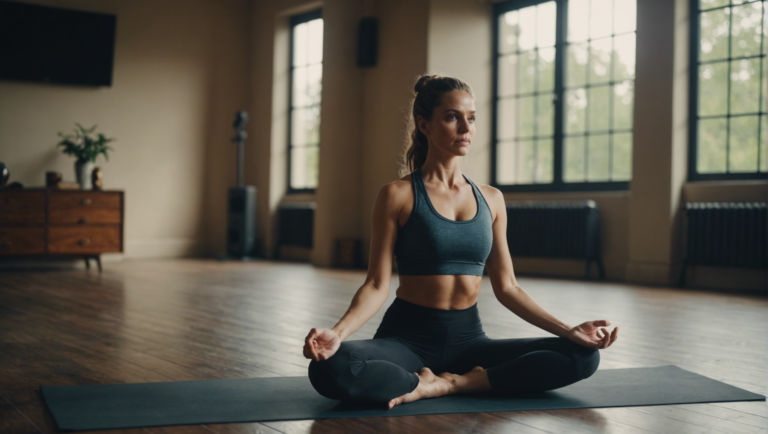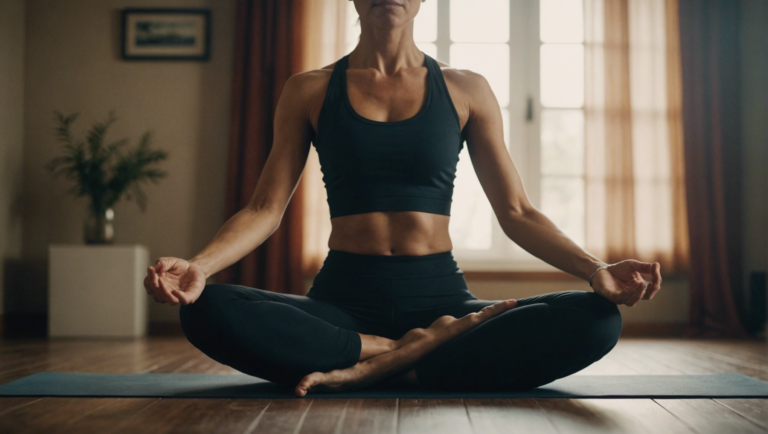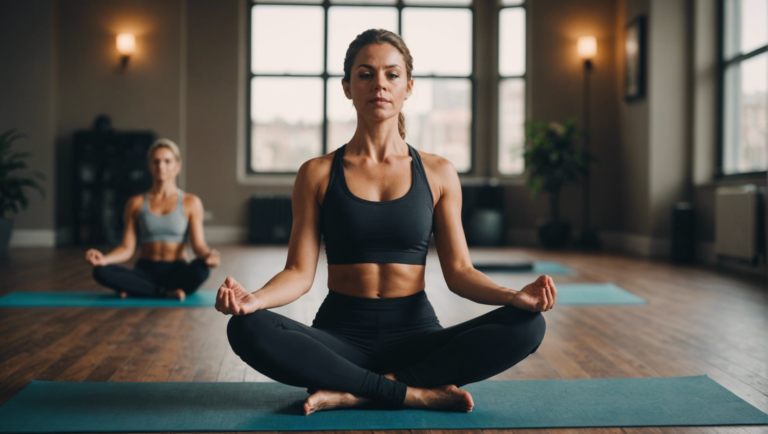Step-by-Step Guidelines On How To Become A Certified Iyengar Yoga Teacher
Understanding the Iyengar Yoga Certification Process
Becoming a Certified Iyengar Yoga Teacher
In the world of yoga, Iyengar Yoga stands out for its precision and emphasis on alignment. If you’re passionate about this discipline and aspire to teach it to others, obtaining certification as an Iyengar Yoga teacher is a significant step in your journey. Let’s delve into the step-by-step guidelines that will pave your way to becoming a certified Iyengar Yoga teacher.
Understanding Iyengar Yoga
Before embarking on the certification process, it’s crucial to have a solid understanding of Iyengar Yoga. Developed by B.K.S. Iyengar, this style of yoga focuses on alignment, detail, and precision in the performance of yoga postures (asanas). Props such as belts, blocks, and blankets are often used to help practitioners of all levels achieve the correct alignment.
Immersing Yourself in Practice
One of the foundational requirements for becoming a certified Iyengar Yoga teacher is dedicated practice. Immerse yourself in your own practice, honing your skills, deepening your understanding of the asanas, and familiarizing yourself with the use of props. Regular practice not only enhances your physical abilities but also cultivates the mental discipline essential for teaching yoga effectively.
Completing Teacher Training
To become a certified Iyengar Yoga teacher, you must complete a comprehensive teacher training program recognized by the Iyengar Yoga National Association of the United States (IYNAUS) or the equivalent organization in your country. These programs delve deep into the philosophy and techniques of Iyengar Yoga, equipping you with the knowledge and skills needed to teach this style effectively.
Mentorship and Apprenticeship
Once you have completed your teacher training, seeking mentorship with an experienced Iyengar Yoga teacher is invaluable. Apprenticing under a certified teacher allows you to gain practical teaching experience, refine your skills, and receive guidance on how to effectively impart the principles of Iyengar Yoga to your future students.
Assessment and Certification Process
To attain certification as an Iyengar Yoga teacher, you must undergo a rigorous assessment process conducted by a panel of senior teachers. This assessment typically includes demonstrating proficiency in asanas, sequencing classes, and imparting yoga philosophy. Successful completion of this assessment signifies that you have met the stringent standards set by the Iyengar Yoga certification system.
Continuing Education and Growth
Certification is not the endpoint but rather the beginning of a lifelong journey of learning and growth as a yoga teacher. Engage in continuous education, attend workshops and seminars, deepen your practice, and stay updated on the latest developments in Iyengar Yoga. Embrace every opportunity to expand your knowledge and refine your teaching skills.
Embracing the Role of a Teacher
As a certified Iyengar Yoga teacher, you carry the responsibility of guiding your students on their yoga journeys with integrity, compassion, and expertise. Embrace this role wholeheartedly, embody the principles of Iyengar Yoga in your practice and teaching, and inspire others to experience the transformative power of this ancient discipline.
The path to becoming a certified Iyengar Yoga teacher is a rewarding and transformative journey that requires dedication, perseverance, and a deep commitment to the practice. By following these step-by-step guidelines and immersing yourself wholeheartedly in the teachings of Iyengar Yoga, you can embark on a fulfilling career as a certified teacher, sharing the profound benefits of this practice with others.
Exploring the Core Principles of Iyengar Yoga Teaching
Iyengar yoga is a traditional form of yoga that focuses on alignment, precision, and detail in the practice of various yoga postures. Aspiring to become a certified Iyengar yoga teacher involves a deep understanding of the core principles that govern this specific style of yoga teaching. Let’s delve into the essential steps and guidelines that one must follow to pursue a path towards becoming a certified Iyengar yoga teacher.
Understanding the Fundamentals of Iyengar Yoga
Before embarking on the journey to become a certified Iyengar yoga teacher, it is crucial to have a solid grasp of the fundamental principles of Iyengar yoga. This style of yoga emphasizes the precision of alignment in each yoga pose, the use of props to support the body, and the incorporation of breathing techniques to deepen the practice.
Commit to Your Own Practice
One of the primary requirements to become a certified Iyengar yoga teacher is a dedicated personal practice. It is essential to immerse yourself in the teachings of Iyengar yoga, consistently practice various asanas (postures), and explore the subtleties of alignment and adjustment within each pose. By deepening your own practice, you will not only enhance your understanding of Iyengar yoga but also lead by example for your future students.
Enroll in an Iyengar Yoga Teacher Training Program
To become a certified Iyengar yoga teacher, you must complete a rigorous teacher training program accredited by the Iyengar Yoga National Association of the United States (IYNAUS) or its equivalent in your country. These programs provide in-depth training on the principles of Iyengar yoga, teaching methodology, anatomy, and philosophy. By enrolling in a certified training program, you will receive guidance from experienced Iyengar yoga teachers and mentors.
Gain Teaching Experience
As you progress through your teacher training program, it is essential to gain hands-on teaching experience. This can involve assisting certified Iyengar yoga teachers in their classes, leading community classes, or conducting private sessions. Teaching yoga to a variety of students will help you refine your teaching skills, understand the individual needs of your students, and adapt your instruction to different levels of practitioner.
Prepare for Certification
Once you have completed your teacher training program and accumulated the required teaching hours, you can start preparing for the certification process. This typically involves a comprehensive assessment of your teaching skills, knowledge of Iyengar yoga principles, and your ability to effectively communicate and demonstrate yoga postures. By demonstrating proficiency in these areas, you will be on your way to becoming a certified Iyengar yoga teacher.
Continual Learning and Growth
Becoming a certified Iyengar yoga teacher is not the end of the journey but rather the beginning of a lifelong process of learning and growth. It is essential to continue deepening your practice, attending workshops and seminars, and seeking guidance from senior Iyengar yoga teachers. By staying committed to your personal growth as a yoga teacher, you will inspire and empower your students on their own yoga journey.
Becoming a certified Iyengar yoga teacher is a rewarding and transformative experience that requires dedication, commitment, and a deep passion for the practice of yoga. By following these step-by-step guidelines and embodying the core principles of Iyengar yoga, you can embark on a fulfilling journey towards sharing the wisdom and teachings of this traditional yoga style with others.
Mastering Asanas: Key Element in Becoming a Certified Iyengar Yoga Teacher
Mastering Asanas for Certification in Iyengar Yoga Teaching
Key Asanas for Mastering Iyengar Yoga Practice
Iyengar yoga is a discipline known for its emphasis on precision and alignment in each posture, also known as asanas. To become a certified Iyengar yoga teacher, mastering key asanas is essential. These asanas not only help build physical strength and flexibility but also improve mental focus and concentration. Some key asanas that aspiring teachers should focus on mastering include Tadasana (Mountain Pose), Uttanasana (Standing Forward Bend), Adho Mukha Svanasana (Downward-Facing Dog), Trikonasana (Triangle Pose), and Sarvangasana (Shoulder Stand).
Importance of Alignment in Iyengar Yoga
Alignment is a crucial aspect of Iyengar yoga practice. B.K.S. Iyengar, the founder of this style, emphasized the significance of proper alignment to ensure maximum benefit and safety in each pose. Aspiring Iyengar yoga teachers must pay close attention to alignment cues, such as the positioning of the feet, hips, shoulders, and head in each asana. By mastering alignment, teachers can guide their students effectively and prevent injuries during practice.
Utilizing Props in Iyengar Yoga
One distinctive feature of Iyengar yoga is the use of props to support and deepen the practice of asanas. Props such as blocks, straps, blankets, and bolsters help students of all levels achieve correct alignment and experience the benefits of each pose. Aspiring teachers should learn how to effectively use props to assist students in finding the right alignment and experiencing the pose fully. Understanding the role of props is essential for becoming a certified Iyengar yoga teacher.
The Role of Breath in Iyengar Yoga Practice
In Iyengar yoga, the breath plays a significant role in connecting the body and mind during the practice of asanas. Aspiring teachers should focus on mastering different breathing techniques, such as Ujjayi breath (Victorious Breath) and Dirga Pranayama (Three-Part Breath). By syncing breath with movement, teachers can help students deepen their practice, improve concentration, and cultivate a sense of inner calm. breathwork into asana practice is key to becoming a proficient Iyengar yoga teacher.
Practicing Mindfulness and Meditation
Apart from mastering asanas, Iyengar yoga teachers should also emphasize the importance of mindfulness and meditation in their practice. Encouraging students to cultivate awareness of the present moment, observe their thoughts without judgment, and develop a regular meditation practice can enhance the overall yoga experience. By incorporating mindfulness and meditation techniques into classes, certified Iyengar yoga teachers can create a holistic and transformative learning environment for their students.
Mastering key asanas, focusing on alignment, utilizing props effectively, integrating breathwork, and emphasizing mindfulness and meditation are essential elements in becoming a certified Iyengar yoga teacher. By honing these skills and incorporating them into their teaching practice, aspiring teachers can inspire and guide students on their yoga journey with confidence and authenticity.
The Importance of Alignment and Adjustment Techniques in Iyengar Yoga Teaching
Iyengar Yoga is a precise and therapeutic style of yoga that focuses on alignment, strength, and flexibility. One of the key elements that sets Iyengar Yoga apart from other styles is the emphasis on alignment and adjustment techniques. These techniques play a crucial role in helping students achieve correct alignment in each yoga pose, promoting safety, stability, and optimal benefits.
Importance of Alignment in Iyengar Yoga
Alignment in Iyengar Yoga refers to the precise way in which each part of the body is positioned in a yoga pose. Proper alignment ensures that the body is in the correct position to receive the full benefits of the pose while minimizing the risk of injury. By focusing on alignment, students can develop body awareness, improve posture, and enhance the overall effectiveness of their practice.
Benefits of Proper Alignment
When students practice yoga with proper alignment, they can experience a wide range of benefits. These include:
- Injury Prevention: Correct alignment reduces the strain on joints and muscles, lowering the risk of injury during yoga practice.
- Muscle Engagement: Proper alignment ensures that the right muscles are engaged in each pose, leading to increased strength and stability.
- Enhanced Breathing: Aligning the body correctly allows for better breath control and circulation, supporting overall respiratory health.
- Mind-Body Connection: Aligning the body mindfully strengthens the connection between the body and mind, promoting mental clarity and focus.
Adjustment Techniques in Iyengar Yoga Teaching
In Iyengar Yoga, teachers use adjustment techniques to help students refine their alignment in poses. These adjustments may involve verbal cues, physical guidance, or the use of props such as blocks, straps, and bolsters. By providing personalized adjustments, teachers can address individual alignment issues and support students in deepening their practice.
How to Master Alignment and Adjustment Techniques
Becoming proficient in alignment and adjustment techniques requires practice, observation, and a deep understanding of human anatomy. Aspiring Iyengar Yoga teachers can follow these steps to master these essential skills:
- Attend Quality Teacher Training: Enroll in a reputable Iyengar Yoga teacher training program to learn the principles of alignment and adjustment from experienced instructors.
- Practice Regularly: Develop a consistent personal practice to deepen your understanding of alignment and how it feels in your own body.
- Seek Mentorship: Learn from senior teachers and seek guidance on alignment and adjustment techniques to refine your teaching skills.
- Continuing Education: Attend workshops, seminars, and classes to stay current with the latest developments in Iyengar Yoga and deepen your knowledge of alignment principles.
By emphasizing alignment and adjustment techniques in Iyengar Yoga teaching, instructors can create a safe, supportive, and transformative environment for students to explore their practice fully. Mastering these essential skills not only enhances the quality of instruction but also enriches the overall yoga experience for both teachers and students alike.
Nurturing a Mindful and Compassionate Teaching Approach in Iyengar Yoga
In the realm of Iyengar Yoga, nurturing a mindful and compassionate teaching approach is paramount to creating a safe and supportive environment for students to explore the depths of their practice. As teachers, embodying these qualities not only enhances the learning experience but also fosters a sense of trust and connection with those under our guidance.
Cultivating Mindfulness in Teaching
Mindfulness in teaching begins with our own practice. By being fully present on our mats, we cultivate a deep awareness of our bodies, breath, and thoughts. This personal mindfulness then seamlessly translates into our teaching, allowing us to guide students with clarity and intention. Encouraging students to be present in each moment of their practice, focusing on alignment, breath, and sensations, can significantly deepen their experience.
Embracing Compassion in Instruction
Compassion lies at the heart of teaching Iyengar Yoga. It is essential to approach each student with understanding, kindness, and empathy. Recognizing that each individual comes to the mat with their own unique strengths and limitations, a compassionate teacher tailors their instruction to meet the diverse needs of their students. Offering modifications, props, and words of encouragement can make the practice more accessible and inclusive for everyone.
The Power of Patience and Persistence
Patience and persistence are key virtues in nurturing a mindful and compassionate teaching approach. It is vital to understand that progress in yoga is gradual and that each student’s journey is unique. By remaining patient and encouraging perseverance, a teacher creates a supportive space where students feel empowered to explore their practice at their own pace. Celebrating small victories and milestones along the way reinforces a positive and growth-oriented mindset.
Building Trust and Connection
Trust is the foundation of any meaningful teacher-student relationship. By demonstrating authenticity, expertise, and genuine care for their students’ well-being, teachers can build trust and rapport. Creating a supportive and non-judgmental environment where students feel seen, heard, and respected fosters a sense of connection that enhances the learning experience.
Honoring the Lineage of Iyengar Yoga
The teachings and principles of B.K.S. Iyengar into our own practice and instruction is essential in upholding the authenticity and integrity of Iyengar Yoga. By respecting the lineage and philosophy of this classical form of yoga, teachers can inspire students to delve deeper into the practice, honoring its rich tradition and wisdom.
Nurturing a mindful and compassionate teaching approach in Iyengar Yoga is a continuous journey of self-discovery and growth for both teachers and students alike. By embodying mindfulness, compassion, patience, and trust, teachers can create a nurturing space where students feel supported, empowered, and inspired to explore the transformative power of yoga.
Conclusion
Aspiring to become a certified Iyengar Yoga teacher involves a journey deeply rooted in dedication, perseverance, and a profound understanding of the core principles that define this ancient practice. Throughout the certification process, prospective teachers gain invaluable insights into the essence of Iyengar Yoga and cultivate essential skills that not only enhance their personal practice but also empower them to guide others on their yoga journey.
Central to the path of becoming a certified Iyengar Yoga teacher is a comprehensive understanding of the certification process itself. By delving into the rigorous requirements and standards set by the Iyengar Yoga Certification Board, aspiring teachers embark on a transformative journey of self-discovery and growth. This process not only hones their teaching abilities but also instills a deep sense of commitment to the practice of Iyengar Yoga.
Exploring the core principles of Iyengar Yoga teaching serves as a cornerstone in the development of a qualified instructor. As teachers delve into the intricacies of alignment, precision, and timing, they cultivate a keen awareness of how each aspect influences the overall practice. By embodying these principles in their own practice and teaching, aspiring teachers develop a solid foundation upon which to build their expertise and proficiency.
Mastering asanas is a key element in the journey towards becoming a certified Iyengar Yoga teacher. Through dedicated practice and focused attention on each posture, teachers not only deepen their understanding of the physical practice but also cultivate a sense of mindfulness and presence. By honing their abilities to perform and teach asanas with precision and alignment, aspiring teachers embody the essence of Iyengar Yoga and inspire their students to explore the depths of their own practice.
One of the distinguishing features of Iyengar Yoga teaching is the emphasis on alignment and adjustment techniques. By learning how to effectively align students in various postures and provide supportive adjustments, teachers create a safe and nurturing environment for their students to explore their practice. Through precise adjustments and clear guidance, teachers can empower their students to experience the transformative power of Iyengar Yoga in a profound and meaningful way.
In addition to technical skills, nurturing a mindful and compassionate teaching approach is essential for aspiring Iyengar Yoga teachers. By cultivating qualities of empathy, patience, and understanding, teachers create a supportive and inclusive space where students can explore the practice without judgment or expectation. This compassionate approach not only fosters a sense of community and connection but also allows teachers to guide their students with wisdom and sensitivity.
Ultimately, the journey to becoming a certified Iyengar Yoga teacher is a deeply enriching and rewarding experience. By immersing oneself in the principles of Iyengar Yoga teaching, mastering the art of asanas, and cultivating a mindful and compassionate approach, aspiring teachers not only deepen their own practice but also inspire and guide others on the path to health, well-being, and self-discovery.


